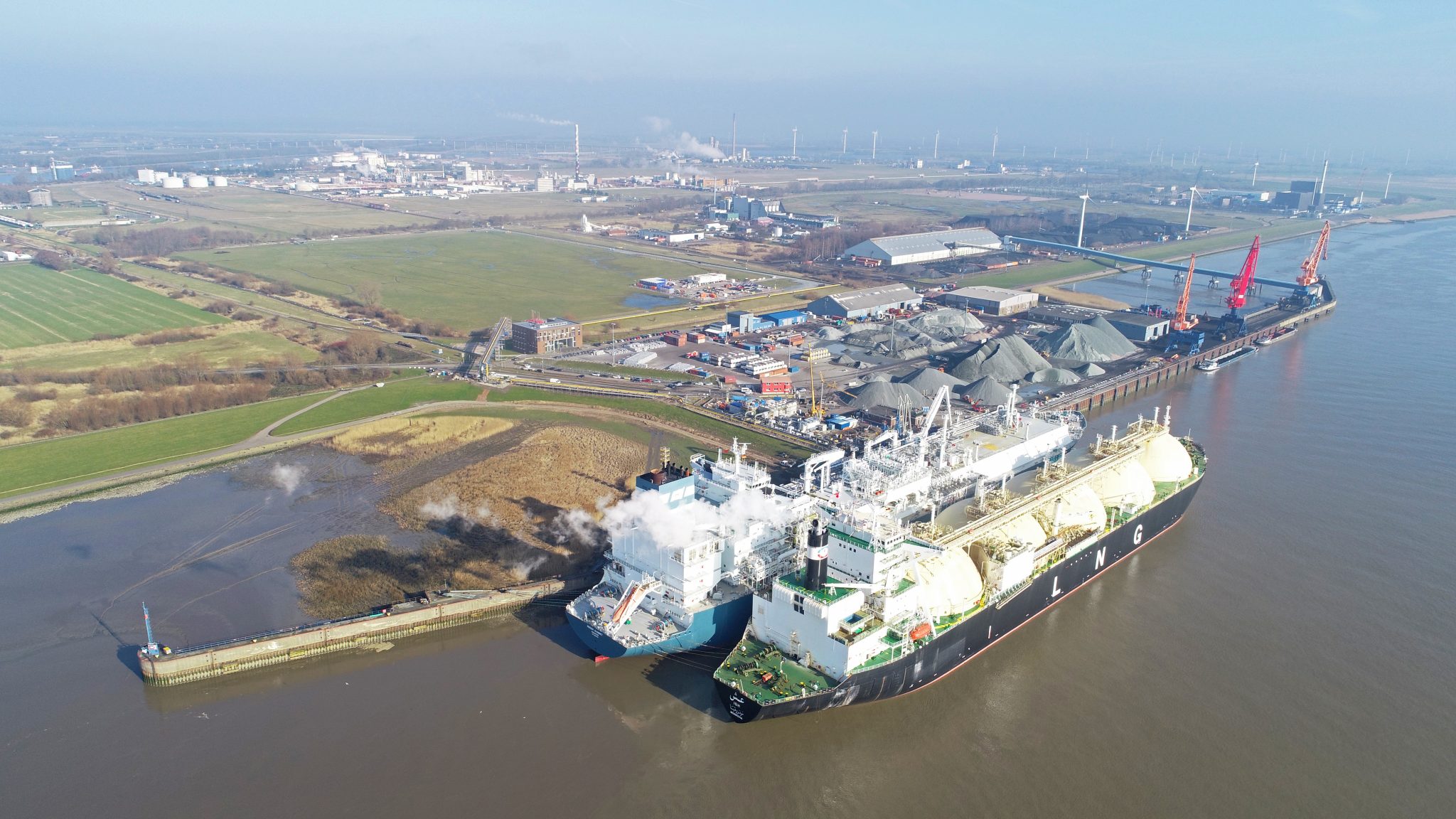
Image: Brunsbüttel Ports GmbH.
In a strategic move to reduce reliance on Russian pipeline gas, state-owned Deutsche Energy Terminal has announced two auctions for short-term regasification capacities in 2024. The auctions, scheduled for October 16 and 23, will be held at liquefied natural gas (LNG) terminals in Brunsbuettel and Wilhelmshaven 1. Another round in December will offer additional short-term capacities at the Stade and Wilhlemshaven 2 terminals.
To bridge the gap until fixed terminals are established, Germany is employing floating storage and regasification terminals (FSRUs). Currently, three FSRUs are operational at Wilhelmshaven, Brunsbuettel, and Lubmin ports. These FSRUs (Floating Storage Regasification Unit) serve as a crucial stopgap measure after Germany arranged their charter and onshore connections.
Furthermore, with an eye on the future, both industry players and the government are ramping up terminal capacity. This anticipation is driven by the expected surge in hydrogen usage at these sites. Hydrogen, when produced using renewable energy sources, holds the key to transitioning towards a lower carbon economy.
Deutsche ReGas, the operator at Mukran on Ruegen Island in the Baltic Sea, reported that suppliers have already booked an impressive 4 billion cubic metres (bcm) of capacity for a decade. This development paves the way for Mukran to serve as a central hub for delivering LNG to the mainland. Deutsche ReGas has also sub-chartered a second FSRU from Transgas Power, providing an additional regasification capacity of 7.5 bcm.
Uniper launched Germany’s inaugural FSRU operations with Wilhelmshaven 1, a deep-water port on the North Sea, in December. Building on this success, Tree Energy Solutions (TES) is set to operate a second FSRU, Wilhelmshaven 2, for five years starting in 2023. Uniper’s forward-looking plans include the addition of a land-based ammonia reception terminal and cracker, demonstrating their commitment to facilitating hydrogen transportation over long distances.
Lubmin and Brunsbuettel: Key Players in LNG Infrastructure
Lubmin, with the FSRU Neptune chartered by Deutsche ReGas, became operational earlier this year. This facility plays a pivotal role in ensuring the smooth flow of LNG to the onshore grids. On the other hand, Brunsbuettel’s FSRU, operated by RWE’s trading arm, has received significant support from the EU Commission for its contribution to supply security and diversification.
Stade: A Promising Hub on the Elbe
Stade, an inland port on the river Elbe, is gearing up for the addition of an FSRU landing pier, slated for completion in 2024. Project firm Hanseatic Energy Hub is also in the planning stages for a land-based terminal with allocated regasification capacity, possibly operational by 2027.
Source:Reuters (Reporting by Vera Eckert; Editing by Barbara Lewis, Jan Harvey, David Evans and Jane Merriman)

